The artist-goddess in all her glory
‘The landscape has its own ideas about what I should make’
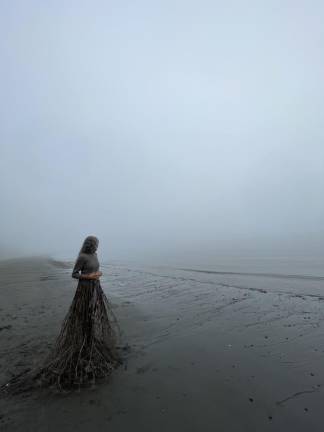
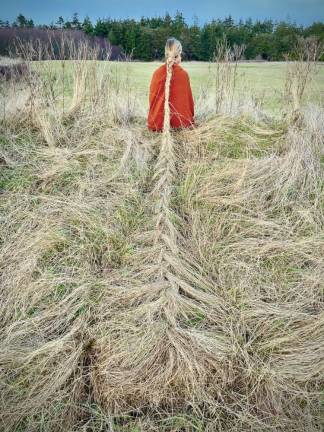
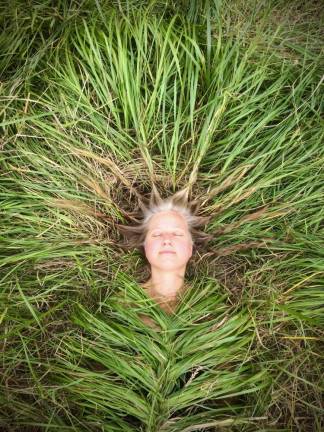
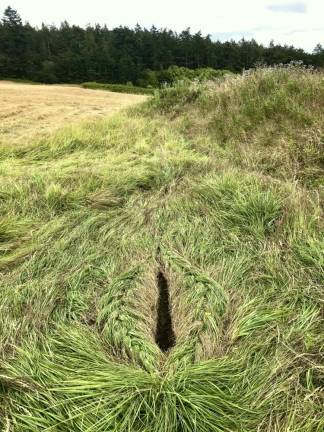

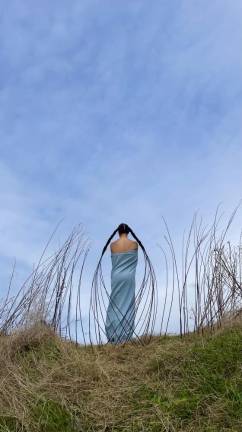
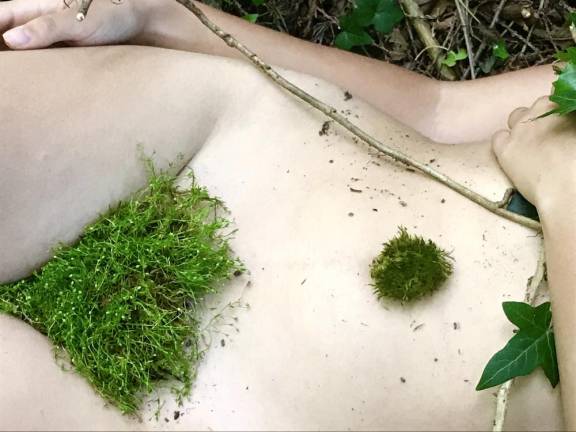
The infinite imagination of Mother Nature is a sphere to which all of humanity is granted privileged access, but some are particular devotees of her extraordinary talent. Among contemporary artists engaging with the raw elements as a primary material, the work of Jeanne K. Simmons stands out as a remarkable celebration of the supreme artist-goddess in all her glory.
Working intimately with the environment as her medium, Simmons creates temporary eco installations that endure as photographs. These works capture the compelling beauty and serenity of her singular land-art practice.
“I realized some time ago that when I started making this body work, I was sort of imposing my ideas upon the landscape,” said Simmons. “And then later, it felt like the landscape began imposing its ideas on me. It still feels that way, like the landscape has its own ideas about what I should make.”
Simmons’ alignment with the natural world goes back to her earliest days as an artist. Born in coastal New Hampshire, she studied at the Maine College of Art and Skowhegan School of Painting and Sculpture. Her time as student at the Art Institute of Chicago gave her a glimpse of the urban scene before she beat a path back to rural lands. She eventually moved to Vashon Island in the Puget Sound before settling in Port Townsend, WA with her husband, artist Gunter Remnitz, and their children.
Over the years, Simmons became increasingly observant of nature during her daily walks along the beaches, fields, and woods of the Olympic Peninsula. This routine reflection led her to engage with ephemeral elements to create her art, and she cites the stabilizing and sustaining effect of the natural world as the real inspiration for her work. Free from traditional gallery or museum settings, these atypical (and archetypal) artworks reveal a loving collaboration between Simmons and her ever-giving muse. “I create no waste,” she said matter-of-factly. “I don’t accumulate objects that clutter up my life or living spaces. I spend virtually no money on this work. My materials are almost always freely found and harvested.”
Her leave-no-trace projects do not alter the landscape in any way. Rather she entangles herself with organic materials – grass, kelp, moss, fern, bark, weeds and flowers – to weave out artworks whose splendor is in their precious transience. Her works often incorporate female models: in Grass Cocoon (2018) we see a smiling woman fully wrapped in long green grass, her body snugly tucked into the ground and her hair woven into the meadow that engulfs her.
“Grass Cocoon set me on a trajectory of exploring my relationship with the natural world, expressing my reverence for it, and affirming my connection to it,” said Simmons.
Simmons is unabashed about her adoration of the Divine Feminine. “Women are my agents of expression,” she asserts. A bold work titled Grassy Yoni (2020), for example, illustrates a female genitalia made entirely of knotted grass in a remote field. With this piece we encounter the ancient yoni (Sanskrit) as a universal life-giving symbol. “Women are central to my work, and that is a conscious decision,” she said. “I see a correlation between the mistreatment of the natural world and the mistreatment of marginalized humans. Through my work I attempt to celebrate and elevate both women and the natural world.”
Among her most moving artworks is Grey Study with Alison (2022), a hauntingly beautiful image that features a woman at the shore in a skirt made of fennel. She stares out to sea while blending into the ghostlike atmosphere of the overcast moment. On her website Simmons describes the inconceivable agony associated with this piece, the loss of her 23-year-old son, Corbin, last year. The vastness of grief embodied in the grey scale of this work is utterly exquisite in its anguish.
Simmons discloses that her artmaking is also directly related to her anxiety about climate change. Her artworks honor the sacred interconnection between humanity and Mother Nature, as well as reflecting personal suffering and loss. By spending time reveling in and grieving for nature, Simmons finds her equilibrium in the face of life’s abominable challenges. “Working in nature helps me to address and express my concerns regarding our fragile rapport with the natural world,” she said.
Despite the gravitas of the worldwide environmental crisis, what Simmons offers the viewer is a restorative experience with Mother Earth. “With my work, I attempt to convey my belief that we belong in nature, that we are part of the very fabric of nature,” she said. “This work is my personal antidote to what I perceive to be the tragic alienation between much of humanity and the earth upon which we are dependent.”